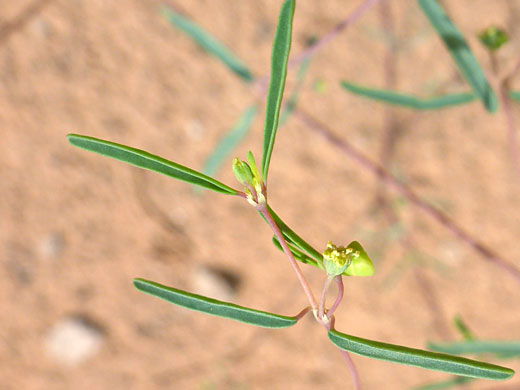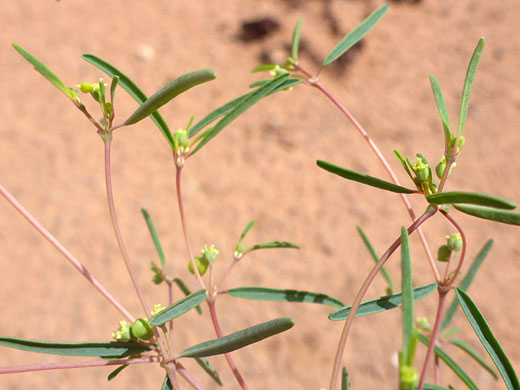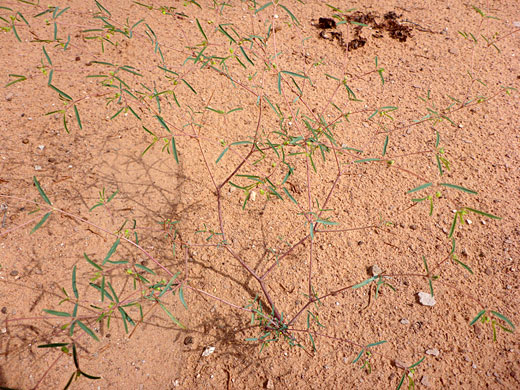Common name:
Parry's sandmat
Family:
Scientific name:
Euphorbia parryi
Synonym:
Chamaesyce parryi
Main flower color:
Range:
The Four Corners states, far west Texas, far south Nevada and southeast California
Height:
Up to 2 feet
Habitat:
Sand dunes, between 3,000 and 6,000 feet
Leaves:
Opposite, narrow, linear, up to 1 inch long
Season:
May to August
Euphorbia parryi is an inconspicuous plant, with slender, reddish stems and narrow, well-separated leaves. Stems may stay close to the ground, but are usually angled upwards, reaching heights of 1 to 2 feet. They branch sparingly at regular intervals, the branches held at wide angles. Leaves are narrow, produced in opposite pairs and attached by short stalks. At the base are a pair of small, linear stipules. Leaf tips are rounded, the edges entire.
One flower-like structure, a cyathium, is produced at the tip of the branches and at the leaf nodes; this has a small, green, bell-shaped involucre, less than 0.1 inches across, to which are attached between 1 and 4 yellowish glands, each with a narrower white margin. At the center are one pistillate flower and up to 55 smaller staminate flowers, usually arranged in five distinct clusters. When fertilized, the pistillate flower lengthens and the ovary expands to form a pendent yellow-green, lobed fruit.
One flower-like structure, a cyathium, is produced at the tip of the branches and at the leaf nodes; this has a small, green, bell-shaped involucre, less than 0.1 inches across, to which are attached between 1 and 4 yellowish glands, each with a narrower white margin. At the center are one pistillate flower and up to 55 smaller staminate flowers, usually arranged in five distinct clusters. When fertilized, the pistillate flower lengthens and the ovary expands to form a pendent yellow-green, lobed fruit.
All Contents © Copyright The American Southwest | Comments and Questions | Contribute | Site Map




